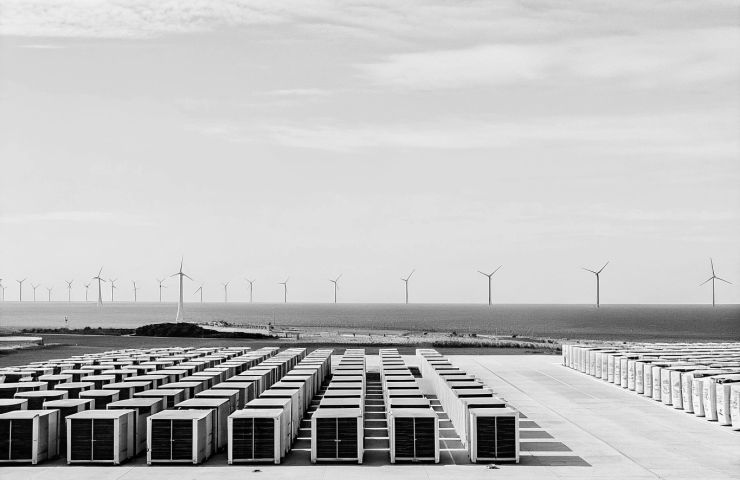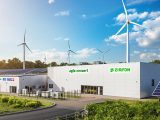
Green Hydrogen Plant Concept Partnership Targets CAPEX below €1,000/kW
October 10, 2025KK Wind Solutions and Stiesdal Hydrogen just inked a game-changing framework deal to roll out cutting-edge Power Supply Units and Electrolyser Control Systems for a next-gen Green Hydrogen Plant concept. Unveiled on 30 September 2025, their goal is ambitious—bring CAPEX below €1,000 per kilowatt. That’s a hefty slice off today’s usual price tags.
This partnership couldn’t come at a more crucial time. Europe’s racing to decarbonize tough sectors like shipping, aviation, and heavy industry, and it needs green hydrogen to step up. Scaling production while slashing costs is essential if we want to compete with fossil fuels and nail those climate targets. Trust me, if you’ve been keeping tabs on the energy transition, deals like this are exactly what we need.
Modular Electrolysis: Simple Yet Powerful
At the core of this project is the HydroGen Electrolyzer, an alkaline Modular Electrolyser engineered for mass production and lightning-fast setup. Each module packs 3.1 MW of punch, so you can kick off with roughly 12.4 MW and just add more modules to scale up. It runs cool, skips expensive noble metals, and leans on widely available electrode materials to keep both costs and upkeep in check. We’re talking about roughly 75 % efficiency across 25–80 % load and hydrogen output at up to 35 bar, boasting over 99.2 % purity. The best part? You can deliver the whole shebang on two trucks—one for the electrolyzers, one for power and auxiliary gear.
The beauty of this setup is in its plug-and-play nature: plop the modules on pre-laid foundations, hook up a few standardized interfaces, and voilà, you’re churning out green hydrogen. This streamlined approach cuts installation headaches, making life easier for project developers.
Integrated Power and Thermal Management
KK Wind Solutions, famous for its savvy in wind turbine power conversion, is bringing bespoke Power Supply Units and Electrolyser Control Systems to the table. These systems smooth out wobbly grid inputs and keep operations locked in—no more fretting over voltage dips or clunky startups. They team up nicely with a built-in Thermal Management System from Nissens Cooling Solutions (now part of KK Wind Solutions), which tames the heat that electrolysis throws off. By keeping temps in check, you boost safety, performance, and the lifespan of your gear.
Each power unit can be fine-tuned to local grid quirks, guaranteeing a seamless hookup and ticking all the regulatory boxes. It’s a genuine end-to-end package, taking you from raw electrons to pure hydrogen.
On top of all that, the control systems come with remote monitoring and diagnostics, letting operators tweak settings, schedule maintenance, and sort out glitches from anywhere. That means less downtime and a healthier bottom line for reliability.
A Legacy of Danish Innovation
This isn’t their first rodeo. Since teaming up in 2021, these two have been refining power conversion and control tech for green hydrogen—remember that first kilo of green hydrogen back in 2023 at a Danish test site? That milestone was their proof of concept, paving the way for today’s industrial-scale ambitions. Along the journey, they’ve tapped into deep Danish engineering chops to fine-tune designs, boost performance, and whittle down costs.
That early win showed what happens when you marry a Modular Electrolyser with smart power and thermal controls. Now, they’re taking that same spirit and cranking it up a notch.
Scaling Challenges and Market Context
Let’s be real, scaling green hydrogen across Europe has its fair share of hurdles. We need a lot more renewable electricity capacity, plus sturdy distribution networks to shuttle hydrogen from coastal hubs inland. And of course, regulators and financiers need to get on board with fresh frameworks that reward low-carbon solutions.
That said, this modular plant concept tackles many of those pain points head-on—shorter lead times, easier permitting, and steadier project economics thanks to standardization.
The flexible design handles anything from wind farm surges to sunny solar park peaks, ramping production up when renewable juice is plentiful and dialing it back when demand spikes. That kind of operational agility curbs renewable curtailment and squeezes the most out of every electron—critical as Europe adds more intermittent renewables to the grid.
Industrial Collaboration and Future Projects
Beyond this pact, Stiesdal Hydrogen is teaming with energy partner Uniper on medium-scale plants in the 20–50 MW ballpark, another sign the industry is all about modular, cost-effective solutions. Meanwhile, KK Wind Solutions is flexing its renewable energy savvy to back other Power-to-X ventures, proving that cross-sector muscle can supercharge the green hydrogen value chain.
Collaborations like these underscore the appetite among manufacturers, utilities, and investors to champion modular grey-to-green transitions. It’s a reminder that real innovation often springs from partnerships where each player brings their A-game.
Environmental and Economic Benefits
Hitting a CAPEX below €1,000 per kW is a big deal—it undercuts what most projects are shelling out right now. Lower upfront prices mean more investors, quicker rollouts, and a broader pool of off-takers. Plus, standardized modules mean you can slim down spare parts inventories and training programs, trimming operational costs even further.
On the green side, producing hydrogen with renewable power means zero CO₂ emissions—an absolute must for cutting carbon in sectors that aren’t easy to electrify. Made in Denmark, made for Europe’s future, this project taps local manufacturing and engineering know-how, creating jobs and beefing up regional supply chains. By lowering both costs and complexity, it delivers benefits that ripple out to communities, industries, and the planet alike.
Looking Ahead
All in all, this partnership is all about CAPEX Reduction and solving real-world problems by standardizing, industrializing, and integrating the essential pieces of a Green Hydrogen Plant. The design is built for rapid roll-out and scale-up, though its success hinges on execution, policy support, and how much renewable power we can hook up. Still, it’s a bold move toward affordable, scalable green hydrogen, keeping Europe on track for its decarbonization goals and lighting the path to a cleaner, more resilient energy system.



 With over 15 years of reporting hydrogen news, we are your premier source for the latest updates and insights in hydrogen and renewable energy.
With over 15 years of reporting hydrogen news, we are your premier source for the latest updates and insights in hydrogen and renewable energy.